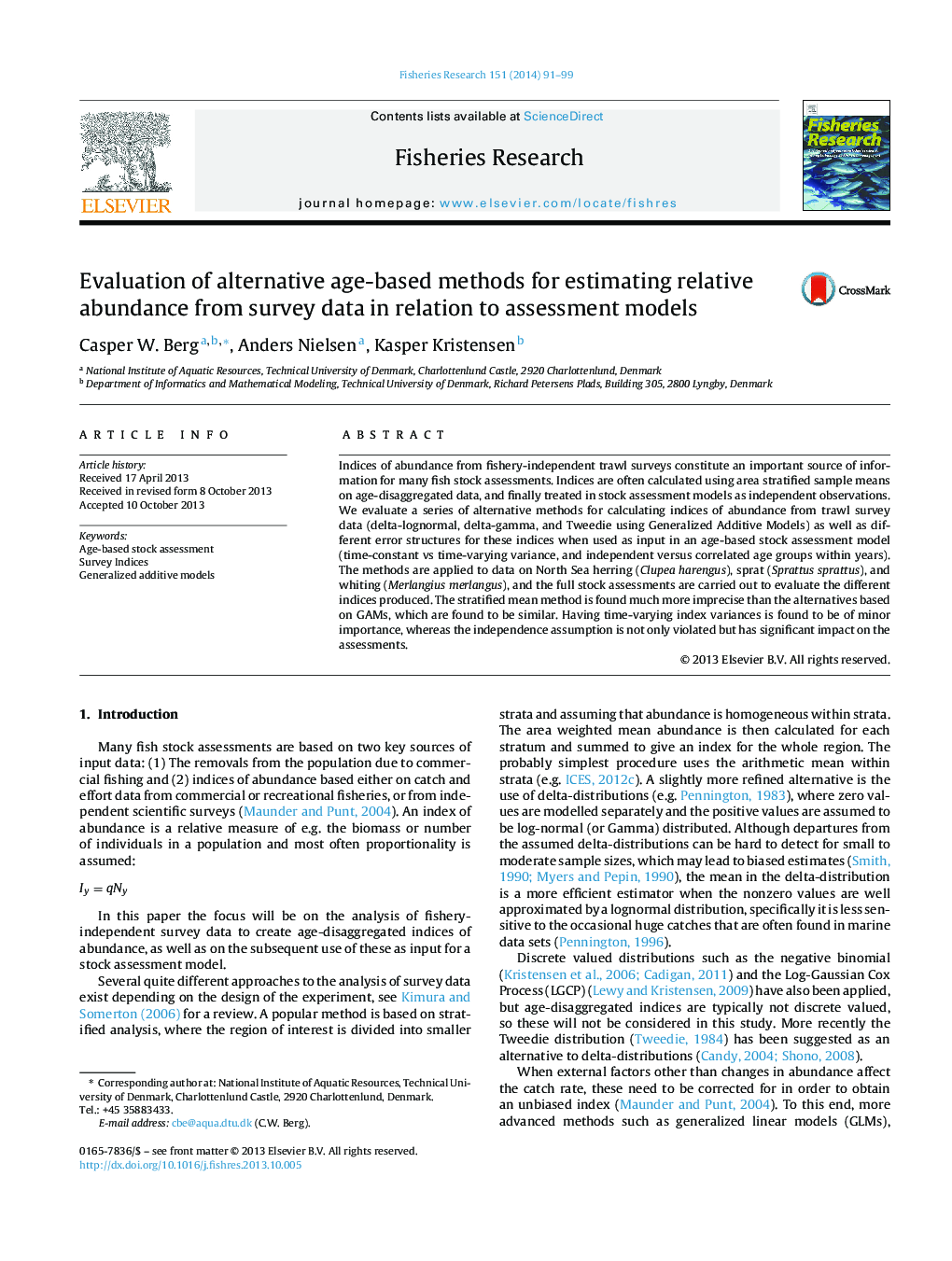| Article ID | Journal | Published Year | Pages | File Type |
|---|---|---|---|---|
| 6385949 | Fisheries Research | 2014 | 9 Pages |
â¢We evaluate a series methods for calculating indices of abundance for fish by age.â¢Stock assessments using the derived indices are carried out for comparison.â¢Delta-lognormal GAM models are found superior to stratified sample means.â¢Including correlations between ages within years improves the stock assessments
Indices of abundance from fishery-independent trawl surveys constitute an important source of information for many fish stock assessments. Indices are often calculated using area stratified sample means on age-disaggregated data, and finally treated in stock assessment models as independent observations. We evaluate a series of alternative methods for calculating indices of abundance from trawl survey data (delta-lognormal, delta-gamma, and Tweedie using Generalized Additive Models) as well as different error structures for these indices when used as input in an age-based stock assessment model (time-constant vs time-varying variance, and independent versus correlated age groups within years). The methods are applied to data on North Sea herring (Clupea harengus), sprat (Sprattus sprattus), and whiting (Merlangius merlangus), and the full stock assessments are carried out to evaluate the different indices produced. The stratified mean method is found much more imprecise than the alternatives based on GAMs, which are found to be similar. Having time-varying index variances is found to be of minor importance, whereas the independence assumption is not only violated but has significant impact on the assessments.
